Direct brow lift
1. Introduction
This is the most efficient way to raise the eyebrow when the frontalis muscle is paralyzed. Other techniques require more surgery and quicker relapse.
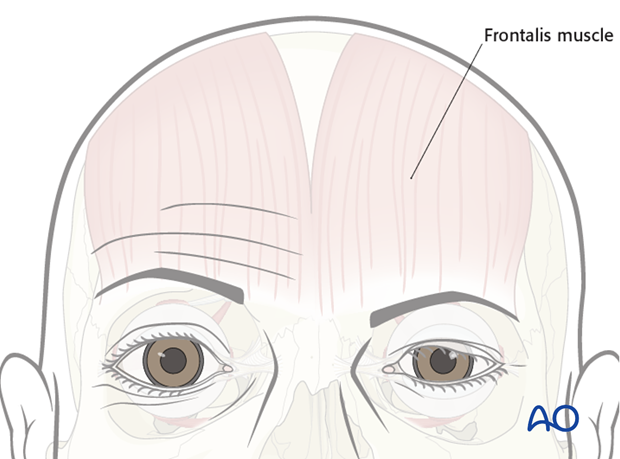
This procedure should not be performed at the same time as upper eyelid gold weight insertion or upper eyelid blepharoplasty.
Brow elevation can reduce eyelid closure.
During elevation consider erring on the conservative side.
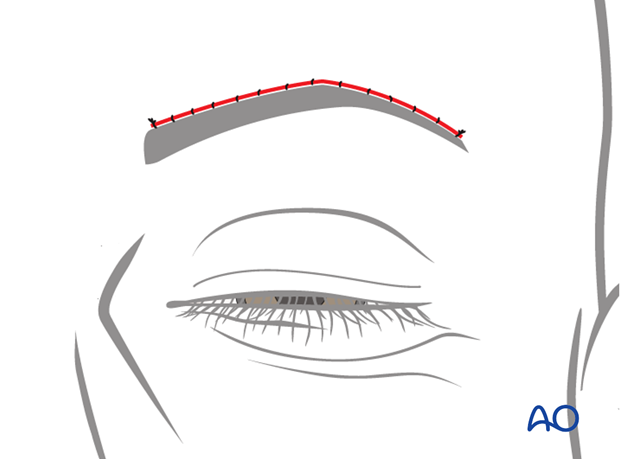
Repositioning of the paralyzed brow is often required to reduce the amount of upper lid skin which can rest on the lashes and obstruct the superior and lateral visual field.
Many techniques of brow elevation have been described; however, in patients with permanent paralysis direct brow excision provides the best long-term outcome.
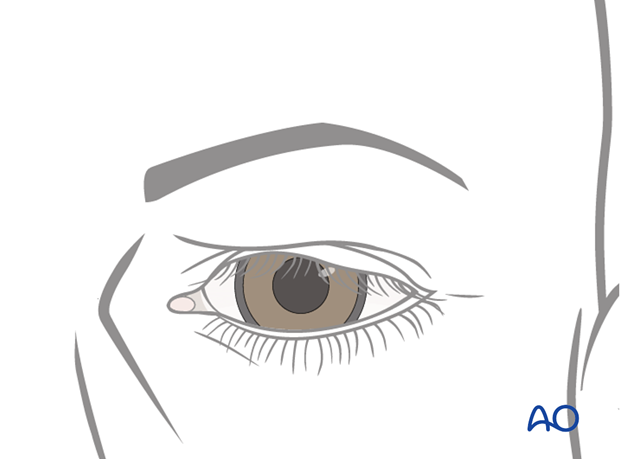
2. Planning and surgical preparation
Eyebrow shape and positioning
The eyebrow is an arched structure with a medial 1/3 resting on the supraorbital rim and the lateral 2/3 above the rim.
The apex of the arch is maximal between the mid and the lateral 1/3 of the brow.
The male brow tends to be lower and less arched than the female brow.
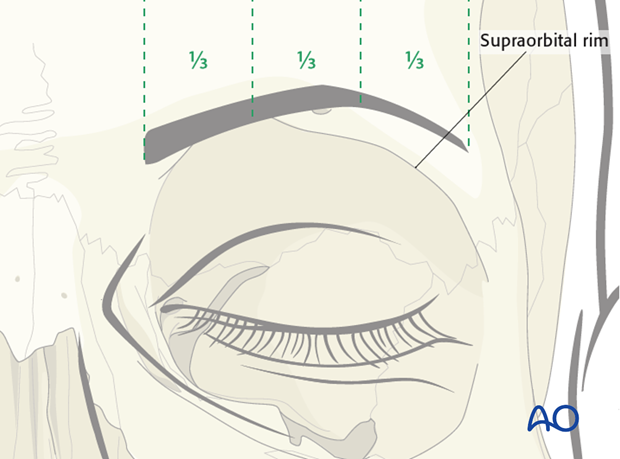
Surgical preparation
The appropriate position of the paralyzed brow can be found by comparing it to the opposite side.
The forehead of the patient should be fully relaxed.
This can be achieved by placing the hand on the patient's forehead and asking him/her to relax.
The paralyzed side is raised to achieve symmetry.
A ruler can be used to determine the amount of elevation, with the maximum elevation centered over the lateral 2/3 of the brow.
The amount of elevation measured corresponds one to one with the skin excision that should be performed.
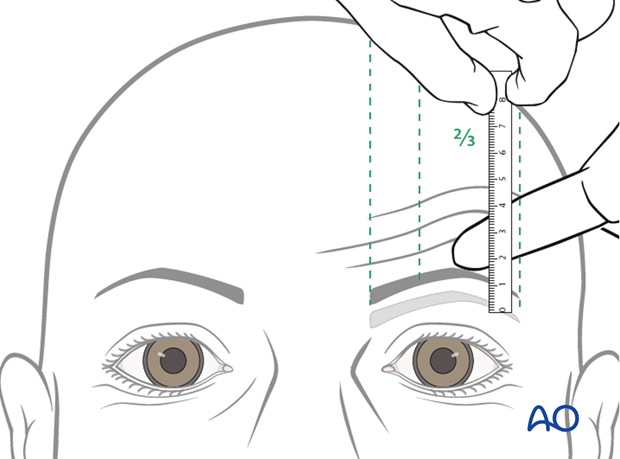
3. Technique
Incision and excision
The inferior incision line follows the natural superior hairline of the brow.
The superior incision is based on the measured maximum elevation at the lateral 2/3 of the brow. Medially and laterally the incision is tapered to meet the inferior incision such that an ellipse is created.
The skin is excised down to the periosteum.

Closure
The skin is closed in layers.
If desired, the periosteum can be included in the sutures, according to surgeon's preference.
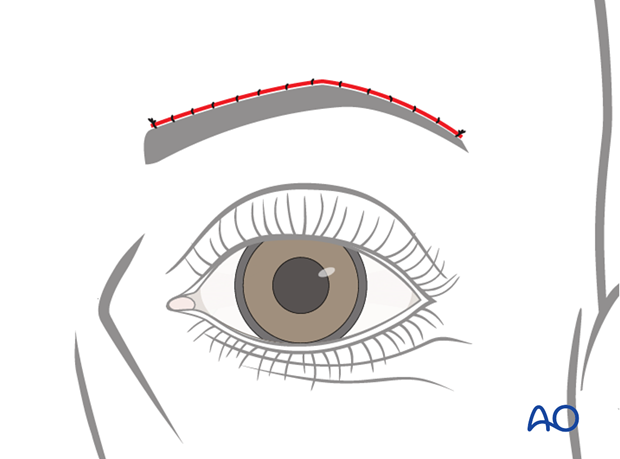
4. Additional considerations
The contralateral brow will continue to elevate during animation and will continue to appear higher than the raised brow, generating an asymmetric appearance.
One option to improve symmetry is botulinum toxin injection in the contralateral frontalis muscle.
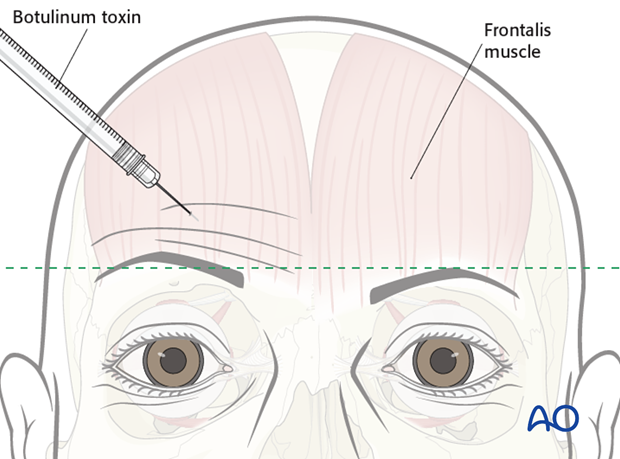
5. Case example: irreversible brow ptosis
a) Preoperative picture showing irreversible brow ptosis.
b) 6 months postoperative picture showing symmetrical brow position at rest.
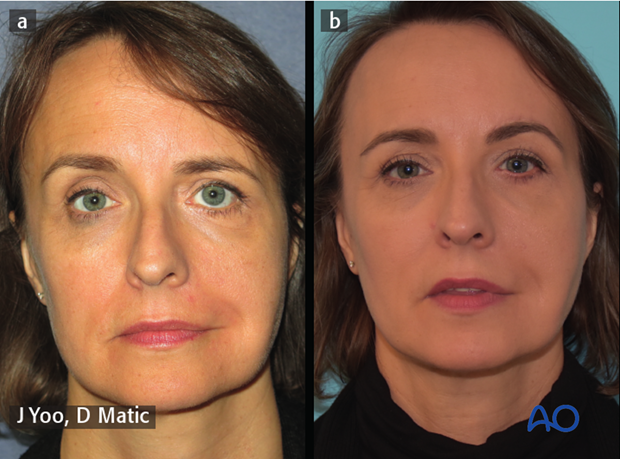
6. Case example: combined treatments
Patient with irreversible facial paralysis of the right side presenting with a painful, dry eye due to loss of eyelid closure, lower lid ectropion, and brow ptosis.
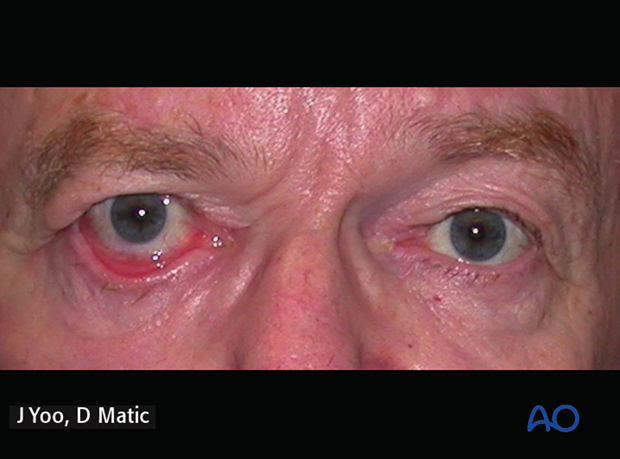
8 years postoperative following gold weight implant, direct brow lift, and transnasal lower lid tendon suspension.

Video of this patient at 8 years follow-up
7. Aftercare
Lubrication
It is important to maintain lubrication and protection of the eye.
Lubrication consists of natural tear substitutes during the day and ointment based lubricants during sleep, often together with taping the eyelid closed.
Protection
Physical protection through eyewear may be necessary depending on occupation and environmental conditions.













